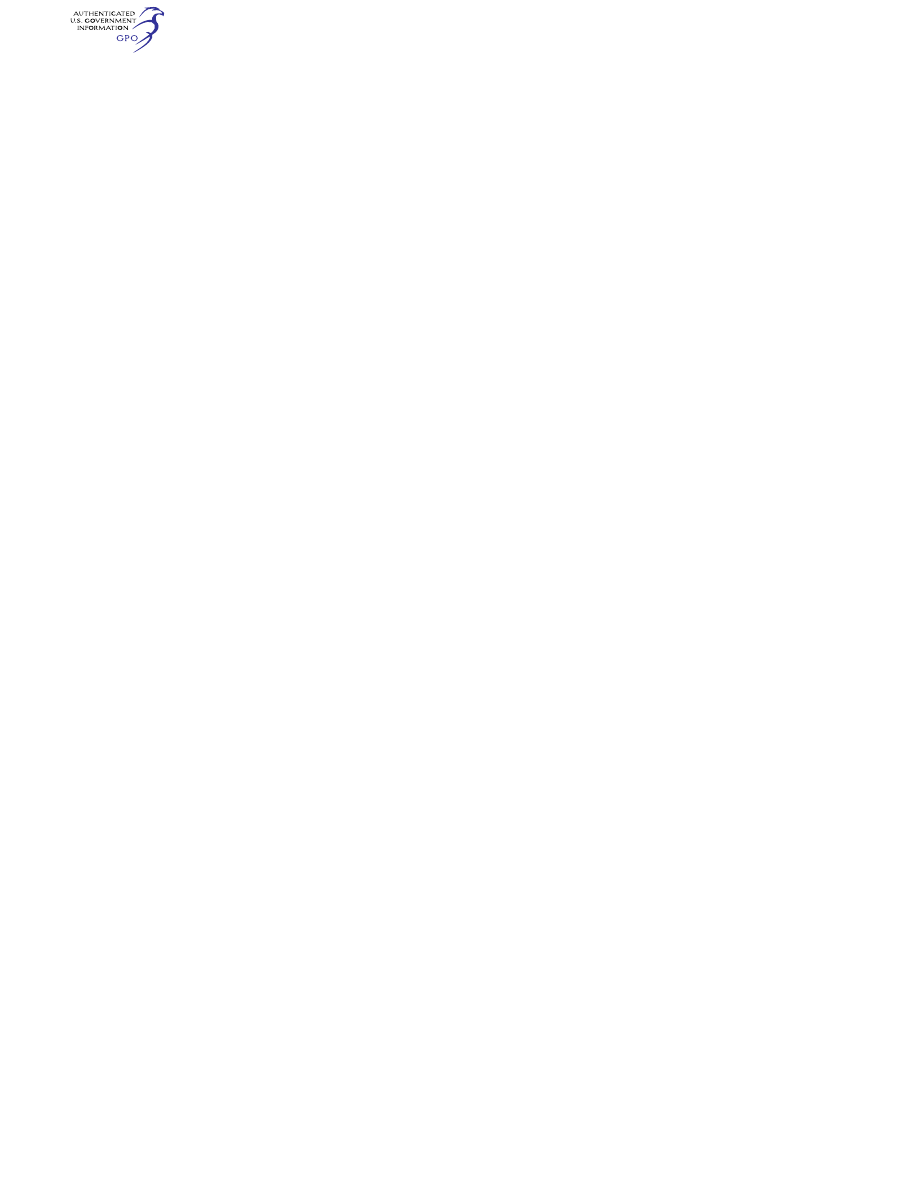
607
Federal Aviation Administration, DOT
§ 29.695
(2) Each fitting, pulley, and bracket
used in attaching the system to the
main structure is included;
(b) Compliance must be shown (by
analyses or individual load tests) with
the special factor requirements for
control system joints subject to angu-
lar motion.
§ 29.683
Operation tests.
It must be shown by operation tests
that, when the controls are operated
from the pilot compartment with the
control system loaded to correspond
with loads specified for the system, the
system is free from—
(a) Jamming;
(b) Excessive friction; and
(c) Excessive deflection.
§ 29.685
Control system details.
(a) Each detail of each control sys-
tem must be designed to prevent jam-
ming, chafing, and interference from
cargo, passengers, loose objects, or the
freezing of moisture.
(b) There must be means in the cock-
pit to prevent the entry of foreign ob-
jects into places where they would jam
the system.
(c) There must be means to prevent
the slapping of cables or tubes against
other parts.
(d) Cable systems must be designed
as follows:
(1) Cables, cable fittings, turn-
buckles, splices, and pulleys must be of
an acceptable kind.
(2) The design of cable systems must
prevent any hazardous change in cable
tension throughout the range of travel
under any operating conditions and
temperature variations.
(3) No cable smaller than
1
⁄
8
inch di-
ameter may be used in any primary
control system.
(4) Pulley kinds and sizes must cor-
respond to the cables with which they
are used. The pulley-cable combina-
tions and strength values specified in
MIL-HDBK-5 must be used unless they
are inapplicable.
(5) Pulleys must have close fitting
guards to prevent the cables from being
displaced or fouled.
(6) Pulleys must lie close enough to
the plane passing through the cable to
prevent the cable from rubbing against
the pulley flange.
(7) No fairlead may cause a change in
cable direction of more than three de-
grees.
(8) No clevis pin subject to load or
motion and retained only by cotter
pins may be used in the control sys-
tem.
(9) Turnbuckles attached to parts
having angular motion must be in-
stalled to prevent binding throughout
the range of travel.
(10) There must be means for visual
inspection at each fairlead, pulley, ter-
minal, and turnbuckle.
(e) Control system joints subject to
angular motion must incorporate the
following special factors with respect
to the ultimate bearing strength of the
softest material used as a bearing:
(1) 3.33 for push-pull systems other
than ball and roller bearing systems.
(2) 2.0 for cable systems.
(f) For control system joints, the
manufacturer’s static, non-Brinell rat-
ing of ball and roller bearings may not
be exceeded.
[Doc. No. 5084, 29 FR 16150, Dec. 3, 1964, as
amended by Amdt. 29–12, 41 FR 55471, Dec. 20,
1976]
§ 29.687
Spring devices.
(a) Each control system spring device
whose failure could cause flutter or
other unsafe characteristics must be
reliable.
(b) Compliance with paragraph (a) of
this section must be shown by tests
simulating service conditions.
§ 29.691
Autorotation control mecha-
nism.
Each main rotor blade pitch control
mechanism must allow rapid entry into
autorotation after power failure.
§ 29.695
Power boost and power-oper-
ated control system.
(a) If a power boost or power-oper-
ated control system is used, an alter-
nate system must be immediately
available that allows continued safe
flight and landing in the event of—
(1) Any single failure in the power
portion of the system; or
(2) The failure of all engines.
(b) Each alternate system may be a
duplicate power portion or a manually
operated mechanical system. The
power portion includes the power
VerDate Sep<11>2014
09:06 Jun 28, 2024
Jkt 262046
PO 00000
Frm 00617
Fmt 8010
Sfmt 8010
Y:\SGML\262046.XXX
262046
jspears on DSK121TN23PROD with CFR

608
14 CFR Ch. I (1–1–24 Edition)
§ 29.723
source (such as hydrualic pumps), and
such items as valves, lines, and actu-
ators.
(c) The failure of mechanical parts
(such as piston rods and links), and the
jamming of power cylinders, must be
considered unless they are extremely
improbable.
L
ANDING
G
EAR
§ 29.723
Shock absorption tests.
The landing inertia load factor and
the reserve energy absorption capacity
of the landing gear must be substan-
tiated by the tests prescribed in
§§ 29.725 and 29.727, respectively. These
tests must be conducted on the com-
plete rotorcraft or on units consisting
of wheel, tire, and shock absorber in
their proper relation.
§ 29.725
Limit drop test.
The limit drop test must be con-
ducted as follows:
(a) The drop height must be at least
8 inches.
(b) If considered, the rotor lift speci-
fied in § 29.473(a) must be introduced
into the drop test by appropriate en-
ergy absorbing devices or by the use of
an effective mass.
(c) Each landing gear unit must be
tested in the attitude simulating the
landing condition that is most critical
from the standpoint of the energy to be
absorbed by it.
(d) When an effective mass is used in
showing compliance with paragraph (b)
of this section, the following formulae
may be used instead of more rational
computations.
W
W
h
d
h
d
n
n
W
W
L
e
j
e
=
× + −
+
=
+
(
)
;
1 L
and
where:
W
e
= the effective weight to be used in the
drop test (lbs.).
W = W
M
for main gear units (lbs.), equal to
the static reaction on the particular unit
with the rotorcraft in the most critical
attitude. A rational method may be used
in computing a main gear static reac-
tion, taking into consideration the mo-
ment arm between the main wheel reac-
tion and the rotorcraft center of gravity.
W = W
N
for nose gear units (lbs.), equal to
the vertical component of the static re-
action that would exist at the nose
wheel, assuming that the mass of the
rotorcraft acts at the center of gravity
and exerts a force of 1.0
g downward and
0.25
g forward.
W = W
t
for tailwheel units (lbs.) equal to
whichever of the following is critical—
(1) The static weight on the tailwheel with
the rotorcraft resting on all wheels; or
(2) The vertical component of the ground
reaction that would occur at the tailwheel
assuming that the mass of the rotorcraft
acts at the center of gravity and exerts a
force of 1
g downward with the rotorcraft in
the maximum nose-up attitude considered in
the nose-up landing conditions.
h = specified free drop height (inches).
L = ratio of assumed rotor lift to the rotor-
craft weight.
d = deflection under impact of the tire (at
the proper inflation pressure) plus the
vertical component of the axle travel
(inches) relative to the drop mass.
n = limit inertia load factor.
n
j
= the load factor developed, during impact,
on the mass used in the drop test (i.e.,
the acceleration
dv/dt in g’s recorded in
the drop test plus 1.0).
[Doc. No. 5084, 29 FR 16150, Dec. 3, 1964, as
amended by Amdt. 29–3, 33 FR 967, Jan. 26,
1968]
§ 29.727
Reserve energy absorption
drop test.
The reserve energy absorption drop
test must be conducted as follows:
(a) The drop height must be 1.5 times
that specified in § 29.725(a).
(b) Rotor lift, where considered in a
manner similar to that prescribed in
§ 29.725(b), may not exceed 1.5 times the
lift allowed under that paragraph.
(c) The landing gear must withstand
this test without collapsing. Collapse
of the landing gear occurs when a
member of the nose, tail, or main gear
will not support the rotorcraft in the
proper attitude or allows the rotorcraft
structure, other than landing gear and
external accessories, to impact the
landing surface.
[Doc. No. 5084, 29 FR 16150, Dec. 3, 1964, as
amended by Amdt. 27–26, 55 FR 8003, Mar. 6,
1990]
§ 29.729
Retracting mechanism.
For rotorcraft with retractable land-
ing gear, the following apply:
(a)
Loads. The landing gear, retract-
ing mechanism, wheel well doors, and
supporting structure must be designed
for—
VerDate Sep<11>2014
09:06 Jun 28, 2024
Jkt 262046
PO 00000
Frm 00618
Fmt 8010
Sfmt 8010
Y:\SGML\262046.XXX
262046
EC28SE91.089</MATH>
jspears on DSK121TN23PROD with CFR

